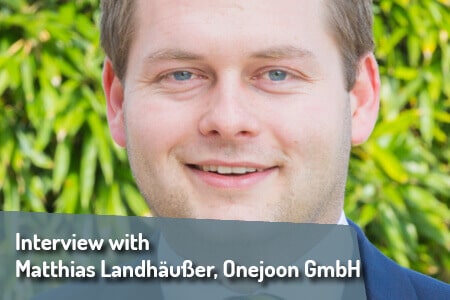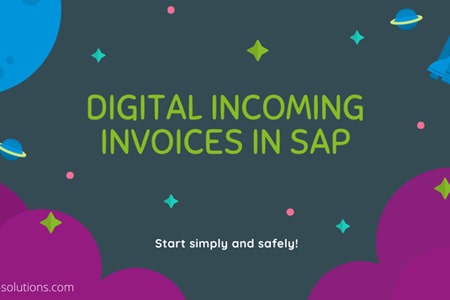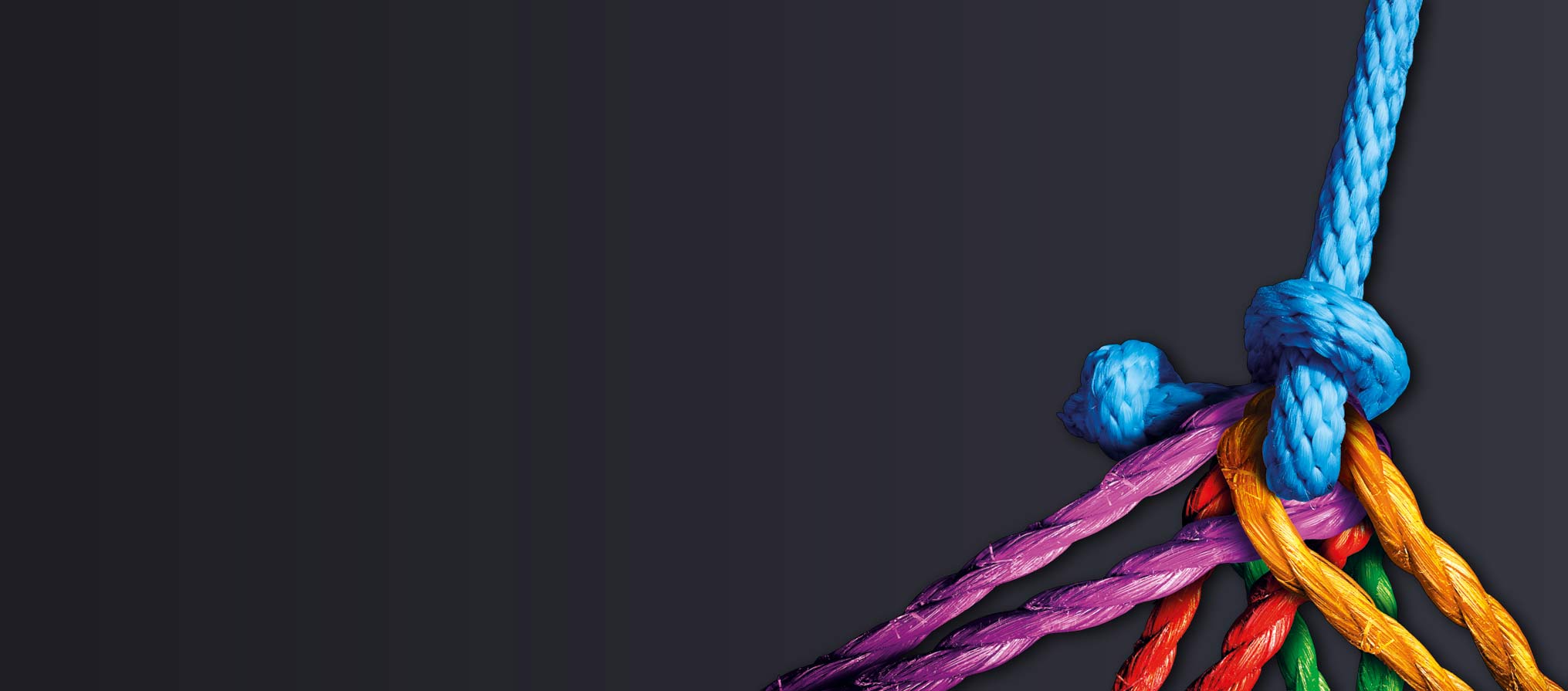
Digital Solution for Incoming Invoices: 15 Working Days from Workshop to Go-Live!
[Last update 13.04.2021: Update of invoice data]
Table of contents:
- Interview with Matthias Landhäußer
- How did Onejoon GmbH manage to implement a digital solution for incoming invoices in five weeks?
- Why was it important to you to start with the standard?
- Standard often sounds like an absolute minimum. Weren't you worried that the basics would not be enough?
- Why do you think that companies still have difficulty sticking to the standard when introducing a digital invoice solution in SAP?
- How does such an approach affect employee acceptance?
- Standard implementation also resulted in the fact that you currently only have four release workflows out of ten. Is that sufficient?
- The solution now has already been in use for several weeks. How is it going?
Mission possible: Going live with a digital solution for incoming invoices within five weeks? Onejoon GmbH has accomplished this in cooperation with AFI Solutions and now is one of the major proponents of best-practice solutions within process digitization in SAP.
Since January 2020, ONEJOON GmbH, formerly Eisenmann Thermal Solutions GmbH & Co. KG, has been a fully owned subsidiary of the ONEJOON Group. In the course of this affiliate inclusion, the construction specialist for industrial furnaces was looking for a new electronic solution for incoming invoices.
Invoice volume
The introduction of the solution needed to be fast as the personnel structures were not designed for manual invoice processing. The team was and is fully geared to digital processes.
In recent years, the average invoice volume has been 20,000 incoming invoices with approximately 30,000 invoice items per year. Due to the global crisis, approx. 7,000 incoming invoices including 17,000 items were received in 2020. The company receives invoices mainly via e-mail PDF (approx. 90 percent) and the paper volume is declining at less than 10 percent.
Interview with Matthias Landhäußer

Matthias Landhäußer, Head of Project Management & Procurement at Onejoon GmbH, explains in an interview why it makes sense to start with a standard configuration especially for electronic solutions for incoming invoices in SAP and what this has to do with trust.
1. How did Onejoon GmbH manage to implement a digital solution for incoming invoices in five weeks?
Matthias Landhäußer: In short, we as a customer have made sure to accept the solution standard of AFI Solutions. The answer sounds simple but should not be underestimated because this means that we put all special wishes and improvements, which often come up in the first weeks of an implementation, on the back burner. Only in this way was it ultimately possible to introduce the solution for incoming invoices within a total of 15 working days.
2. Why was it important to you to start with the standard?
Experience with a large SAP implementation has shown that the project launch drags on if we allow the specialist teams to express special wishes and modifications in the design phase without being familiar with the new software solution. Software suppliers are always willing to meet these requirements which can result in long lead times. A clear definition of the minimum requirements is already the basis for the selection of a suitable software solution.
Therefore, our premise was that we stick to the standard in the beginning and let the specialists of AFI Solutions »just do their thing«. Subsequently, our staff gets to know the tool, its functions and limitations intensively in productive operation and observes the options and use in everyday work. At a later stage, we take advantage of the experience gained to optimize, expand and fine-tune the software.
3. Standard often sounds like an absolute minimum. Weren't you worried that the basics would not be enough?
In my opinion, the standard solution of a supplier for software for invoice entry should already offer clear advantages in its basic form compared to manual capture. Customizing consists of individual steps that can make it even more efficient but this is also possible at a later time. It makes sense to proceed in an evolutionary way. Once the users have a deep insight into the tool, the sustained success of the optimization requests is greater and the costs are lower.
4. Why do you think that companies still have difficulty sticking to the standard when introducing a digital invoice solution in SAP?
This can certainly have several reasons. In our case, I can confirm that our staff also had difficulties, particularly in view of the fact that we already had another invoicing solution that was very much adapted to the company. When a new solution is introduced, people are usually still mentally stuck in the functions of the former system and want to find and display them in the new tool but familiar functions are often not immediately visible.
Right after the first training with the new tool, users requested changes. If we had approved of these requests, the project period would have been accordingly longer. After two months of the productive phase, the change requests from back then could be reduced to exactly one point in the meantime.
Beyond that, the main factor for a fast project implementation is trust in the supplier and the solution. As a customer, we had decided not to restrict AFI Solutions in their approach but to let them take the lead. That implies: project planning and control by AFI Solutions with consequent and short-term support by our team. It also means to have confidence that the supplier reaches project objectives with the solution.
5. How does such an approach affect employee acceptance?
Due to the postponement of change requests, there was no employee satisfaction at the start of implementation for sure. Nevertheless, there was a significant increase in satisfaction after only a few weeks. A critical reflection of the questions that arose in the first productive months together with AFI Solutions had a very positive effect in the further course.
Despite these challenges, which should not be underestimated, the decision for the standard was right, particularly since all further optimizations mainly concern the SAP system itself and not the AFI add-on: these are, for example, invoice verification tolerances, quantity tolerances or price variance tolerances that we will newly adjust in SAP for specific vendors. This is something we did not have in this form in the past and we will have to adapt our SAP system correspondingly.
6. Standard implementation also resulted in the fact that you currently only have four release workflows out of ten. Is that sufficient?
That is correct, we previously had ten approval workflows in the old system. Now we have the maximum number of four workflows in the standard systems and adapted our processes correspondingly. The most frequent releases are for customer center requirements, for invoices without purchase order reference, and these are usually two-stage. This is where there is potential for optimization which has now been identified and defined as a requirement. Here, too, the following applies: what the standard offers is absolutely sufficient for the beginning. Not everything has to be automated right from the start.
7. The solution now has already been in use for several weeks. How is it going?
Our entire processing of incoming invoices is already running via the AFI software. I can say that the clarity of the system is much better compared to the old tool. With the AFI solution, we have an optimal overview of the entire invoicing list: I can clearly see what is in progress and what has been settled. The evaluation options in turn replace another SAP function, namely the liquidity planning. Upcoming cash-outs can be determined quickly and easily.
The consistency of the invoicing process and the transparency in the AFI Monitor is brilliant for us. Automatic processing of the invoice documents and the text recognition make the daily work much easier. And everything else remains to be seen in the near future.
Thank you very much for the interview, Mr Landhäußer.




